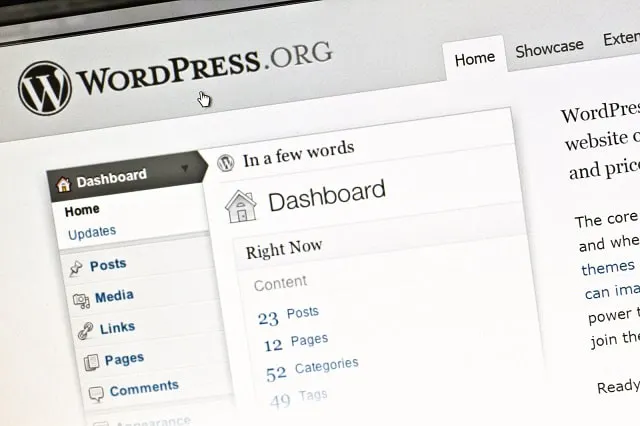The General Protection Data Regulation (GDPR) is something you’re probably familiar with now as a website owner. Still, this regulation is something that remains confusing to a lot of people (if you’re in that boat, you’re not alone!).
Compliance is the key to adhering to GDPR, which protects the rights of internet users by providing guidelines for what data websites can collect and how. WordPress is currently the most-used content management system of website owners. If you have a WordPress site, you should be aware of how WordPress and GDPR work together.
WordPress GDPR Compliance: Does WordPress Play Well with GDPR?
GDPR can affect any business, including your WordPress site. The information you collect and how you collect it plays a more significant role in GDPR compliance than your website platform does. However, WordPress takes steps on its own to help you ensure compliance on your WordPress-hosted site.
Since 2018, the year that GDPR went into effect, WordPress has kept its software compliant with the law. New WordPress versions released after 2018 will also be compliant, as WordPress continues to monitor GDPR requirements and include security measures within its core software. GDPR compliance began with version 4.6.9 and continues into the latest release.
Ensuring WordPress GDPR Compliance with Your Site
Although WordPress works to ensure compliance with GDPR on its end, you’ll still need to make sure you’re doing everything you can do on your end to be compliant, too. That means focusing on the data you collect from visitors, why you collect it, how you collect it, and how your visitors can opt out.
Take the following steps to keep yourself compliant with GDPR on your WordPress site:
Determine What Information You Collect
Knowing where you stand with GDPR starts with knowing what data you collect and how. You’ll need to add this information to your privacy policy to alert your visitors about the data you collect, why, and how it’s used. All WordPress sites are different, so it’s simply not possible for WordPress to provide blanket protection for all WordPress users for GDPR. If you need some help crafting a privacy policy, there are many privacy policy generators that help to streamline the process as well as examples you can follow.
It’s a good idea to speak with a lawyer well-versed in GDPR and internet privacy practices if you’re not sure about the data you collect.
Keep Your WordPress Updated to the Latest Version
We can’t stress enough the importance of keeping WordPress updated on your site’s database. WordPress updates target the platform’s security along with other features, so it’s crucial to install its latest version to ensure that your site is as protected as possible against security breaches.
WordPress lets you know when there’s a new update right on your dashboard. If you have WordPress hosting through your web host, you might even get automatic updates. If not, it’s easy to update with a simple click on your dashboard.
Keep Your Plugins Updated, Too
Your plugins can create security vulnerabilities in your WordPress site if they’re not up to date, too. Every time you update WordPress, be sure to check on your plugins. Many plugins receive updates to keep them compatible with the newest version of WordPress within one or two days after a new WordPress release.
Also, read through the version information for each plugin update. There may be new features that require new forms of data collection that you’ll need to consider for your privacy policy.
Use a Plugin to Help
Speaking of plugins, WordPress plugins can add a lot of functionality to your site to make things simpler on your end. With plugins comes the responsibility of making sure they’re all GDPR compliant, too. But the right plugin can also help your site remain GDPR compliant.
The ShareThis Consent Management Platform for WordPress can help you do that. The plugin allows your site’s users to manage the data you collect on your site. Users can accept or reject their consent to your cookies with a simple pop-up.
Review and Update Your Privacy and Cookie Policies Regularly
With basic security practices in place, you’ll keep your WordPress site GDPR compliant. But you should also get into a regular habit of updating your privacy and cookie policies. These policies are where your visitors can learn about the data you collect, how you collect it, and why you collect it.
When you change the plugins you use or add features to your site that collect data, update your policies. Review them every couple of months and indicate in your policies the date you updated them.
If you serve people in the European Union (EU), you’re subject to GDPR. As a WordPress user, you have the benefit of a secure platform that meets GDPR compliance. Still, it’s ultimately your responsibility to keep your site compliant with its plugins, features, and data collection practices. Install the Consent Management Platform for WordPress to stay on top of consent management and ensure compliance with ease.






